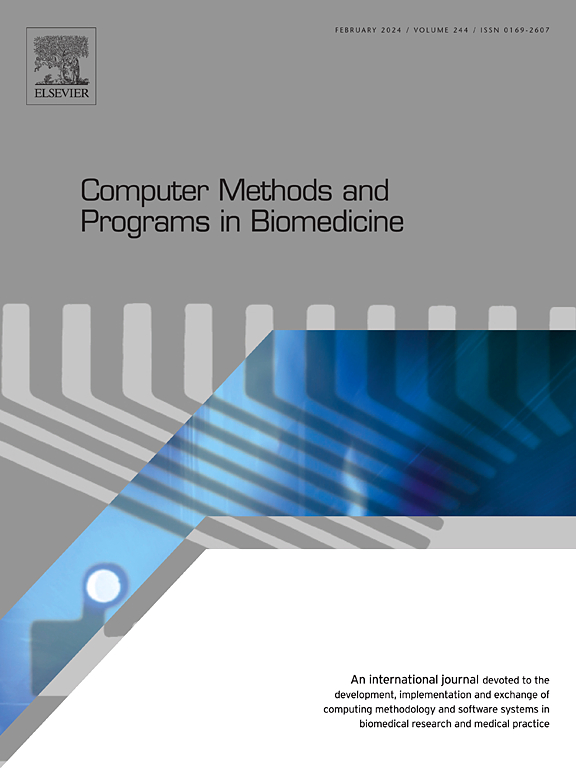稳定机器学习以获得可重复和可解释的结果:一种针对特定主题的新验证方法
IF 4.9
2区 医学
Q1 COMPUTER SCIENCE, INTERDISCIPLINARY APPLICATIONS
引用次数: 0
摘要
机器学习(ML)正在通过提高诊断准确性、预测疾病进展和个性化治疗来改变医学研究。虽然在大型数据集上训练的一般模型可以识别跨人群的广泛模式,但受遗传、环境和生活方式影响的人类生物学的多样性往往限制了它们的有效性。这推动了向特定主题模型的转变,该模型结合了个体生物学和临床数据,以实现更精确的预测和个性化护理。然而,开发这些模型面临着重大的实际和财务挑战。此外,通过带有随机种子的随机过程初始化的ML模型在改变这些种子时可能会出现再现性问题,从而导致预测性能和特征重要性的变化。为了解决这个问题,本研究引入了一种新的验证方法,以提高模型的可解释性,稳定预测性能,并在群体和主题特定水平上提高特征的重要性。方法:我们在9个数据集上进行了初始实验,这些数据集在领域问题、样本量和人口统计数据方面各不相同,使用单个随机森林(RF)模型,并对关键随机过程进行了随机种子初始化。在评估特征重要性一致性的同时,采用了不同的验证技术来评估模型的准确性和可重复性。接下来,对每个数据集重复实验,每个受试者多达400次试验,在每次试验之间随机播种机器学习算法。这在模型参数的初始化中引入了可变性,从而对机器学习模型的特征和性能一致性提供了更全面的评估。重复的试验为每个受试者生成了多达400个特征集。通过汇总各试验的特征重要性排名,我们的方法确定了最一致的重要特征,减少了噪声和随机变化对特征选择的影响。然后确定所有试验中最重要的特定于受试者的特征重要性集。最后,使用所有特定于主题的特征集,还创建了特定于组的顶级特征重要性集。这一过程产生了稳定的、可重复的特征排序,增强了主题级和组级模型的可解释性。结果:我们发现随机初始化的机器学习模型特别容易受到可重复性、预测准确性和特征重要性的影响,因为在训练过程中随机选择种子和验证技术。随机种子的变化改变了权重初始化、优化路径和特征排名,导致测试准确性和可解释性的波动。这些发现与先前关于随机模型对初始随机性的敏感性的研究一致。本研究建立在这种理解的基础上,引入了一种新的带有随机种子变异的重复试验验证方法,显著降低了特征排名的可变性,提高了模型性能指标的一致性。该方法能够使用单一的通用机器学习模型对每个主题的关键特征进行鲁棒识别,使预测在实验中更具可解释性和稳定性。结论:特定受试者模型通过解决人类生物学的可变性提高了通用性,但在临床试验中往往成本高昂且不切实际。在这项研究中,我们引入了一种新的验证技术,用于确定一般机器学习模型中特定于群体和主题的特征重要性,从而在特征选择方面实现了更大的稳定性,更高的预测准确性,并改进了模型的可解释性。我们提出的方法在使用包含随机过程的模型时确保了可重复的精度指标和可靠的特征排名,使机器学习模型更加鲁棒和临床应用。本文章由计算机程序翻译,如有差异,请以英文原文为准。
Stabilizing machine learning for reproducible and explainable results: A novel validation approach to subject-specific insights
Introduction:
Machine Learning (ML) is transforming medical research by enhancing diagnostic accuracy, predicting disease progression, and personalizing treatments. While general models trained on large datasets identify broad patterns across populations, the diversity of human biology, shaped by genetics, environment, and lifestyle, often limits their effectiveness. This has driven a shift towards subject-specific models that incorporate individual biological and clinical data for more precise predictions and personalized care. However, developing these models presents significant practical and financial challenges. Additionally, ML models initialized through stochastic processes with random seeds can suffer from reproducibility issues when those seeds are changed, leading to variations in predictive performance and feature importance. To address this, this study introduces a novel validation approach to enhance model interpretability, stabilizing predictive performance and feature importance at both the group and subject-specific levels.
Methods:
We conducted initial experiments using a single Random Forest (RF) model initialized with a random seed for key stochastic processes, on nine datasets that varied in domain problems, sample size, and demographics. Different validation techniques were applied to assess model accuracy and reproducibility while evaluating feature importance consistency. Next, the experiment was repeated for each dataset for up to 400 trials per subject, randomly seeding the machine learning algorithm between each trial. This introduced variability in the initialization of model parameters, thus providing a more comprehensive evaluation of the machine learning model’s features and performance consistency. The repeated trials generated up to 400 feature sets per subject. By aggregating feature importance rankings across trials, our method identified the most consistently important features, reducing the impact of noise and random variation in feature selection. The top subject-specific feature importance set across all trials was then identified. Finally, using all subject-specific feature sets, the top group-specific feature importance set was also created. This process resulted in stable, reproducible feature rankings, enhancing both subject-level and group-level model explainability.
Results:
We found that machine learning models with stochastic initialization were particularly susceptible to variations in reproducibility, predictive accuracy, and feature importance due to random seed selection and validation techniques during training. Changes in random seeds altered weight initialization, optimization paths, and feature rankings, leading to fluctuations in test accuracy and interpretability. These findings align with prior research on the sensitivity of stochastic models to initialization randomness. This study builds on that understanding by introducing a novel repeated trials validation approach with random seed variation, significantly reducing variability in feature rankings and improving the consistency of model performance metrics. The method enabled robust identification of key features for each subject using a single, generic machine learning model, making predictions more interpretable and stable across experiments.
Conclusion:
Subject-specific models improve generalization by addressing variability in human biology but are often costly and impractical for clinical trials. In this study, we introduce a novel validation technique for determining both group- and subject-specific feature importance within a general machine learning model, achieving greater stability in feature selection, higher predictive accuracy, and improved model interpretability. Our proposed approach ensures reproducible accuracy metrics and reliable feature rankings when using models incorporating stochastic processes, making machine learning models more robust and clinically applicable.
求助全文
通过发布文献求助,成功后即可免费获取论文全文。
去求助
来源期刊

Computer methods and programs in biomedicine
工程技术-工程:生物医学
CiteScore
12.30
自引率
6.60%
发文量
601
审稿时长
135 days
期刊介绍:
To encourage the development of formal computing methods, and their application in biomedical research and medical practice, by illustration of fundamental principles in biomedical informatics research; to stimulate basic research into application software design; to report the state of research of biomedical information processing projects; to report new computer methodologies applied in biomedical areas; the eventual distribution of demonstrable software to avoid duplication of effort; to provide a forum for discussion and improvement of existing software; to optimize contact between national organizations and regional user groups by promoting an international exchange of information on formal methods, standards and software in biomedicine.
Computer Methods and Programs in Biomedicine covers computing methodology and software systems derived from computing science for implementation in all aspects of biomedical research and medical practice. It is designed to serve: biochemists; biologists; geneticists; immunologists; neuroscientists; pharmacologists; toxicologists; clinicians; epidemiologists; psychiatrists; psychologists; cardiologists; chemists; (radio)physicists; computer scientists; programmers and systems analysts; biomedical, clinical, electrical and other engineers; teachers of medical informatics and users of educational software.
 求助内容:
求助内容: 应助结果提醒方式:
应助结果提醒方式:


